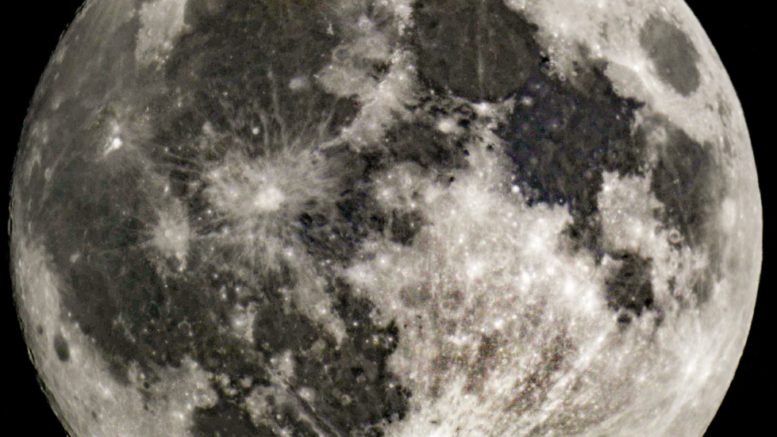The lunar Maria are large, dark, basaltic plains on Earth’s Moon, formed by ancient asteroid impacts on the far side on the Moon that triggered volcanic activity on the opposite, otherwise known as the near, side. They were dubbed maria, Latin for ‘seas’, by early astronomers who mistook them for actual seas. This is a list of Maria, which are large, dark, basaltic plains, on the Moon, which can include other basaltic plains, including the one oceanus as well as features known by the names lacus, palus and sinus. The currently used lunar nomenclature system was introduced in 1651 by Giovanni Battista Riccioli. The maria cover about 16% of the lunar surface, mostly on the side visible from Earth, and this article will be looking at the 5 largest Maria on the surface of the moon.
Mare Frigoris
Latin for Sea of Cold, this Mare is located in the far north of the Moon. It is located in the outer rings of the Procellarum basin, just north of Mare Imbrium, and stretches east to north of Mare Serenitatis. It is just north of the dark crater Plato. In the Apple TV+ series For All Mankind, Mare Frigoris was intended to be the original landing site of the, although in the show the crew decided last minute to divert the landing to Shackleton crater.
Mare Imbrium
Visible with the naked eye from Earth, Mare Imbrium is the right eye of the man in the moon image. Meaning Sea of Showers, Sea of Rains, or Sea of Tears in Latin, Mare Imbrium is a vast lava plain within the Imbrium Basin on the Moon and is one of the larger craters in the Solar System. The basin’s age has been estimated to be 3.9 billion years old, with the diameter of the impactor has been estimated to be 250 ± 25 km. Fun fact: The earliest known name for the mare may be “The Shrine of Hecate as Plutarch records that the Ancient Greeks gave this name to the largest of the “hollows and deeps” on the Moon, believing it to be the place where the souls of the deceased were tormented. Luna 17 and Apollo 15 landed in the Mare.
Mare Fecunditatis
Meaning Sea of Fecundity or Sea of Fertility in Latin, Mare Fecunditatis is located in the eastern half of the visible moon. The mare has a maximum diameter of 840 km, and unlike other maria, there is no mass concentration, or gravitational high, in the center of Mare. September 1970 saw the Luna 16 probe perform the first automated sample return here.
Mare Tranquillitatis
Mare Tranquillitatis, which is Latin for the Sea of Tranquility, is a lunar mare that sits within the Tranquillitatis basin on the Moon. What makes this Mare famous is that it is the first location on another world to be visited by humans, as Apollo 11 landed here. The mare material within the basin consists of basalt, with the basin having irregular margins and lacks a defined multiple-ringed structure. Unlike many other maria, there is no mass concentration in the center of Mare Tranquillitatis. In addition to Apollo 11 landing here, Surveyor 5 landed in the same Mare as well as Ranger 8, which was intentionally crashed into the mare in 1965.
Mare Nubium
Latin for sea of clouds, Mare Nubium is a lunar mare in the Nubium basin on the near side of the moon. The mare is located just to the southeast of Oceanus Procellarum, with the first released images from the Lunar Reconnaissance Orbiter in 2009 were of the lunar highlands 200 km south of Mare Nubium
Make sure to follow us on Twitter and Instagram, and make sure to check out other Top 5 articles like this. For the smallest Maria, check out this article.

Be the first to comment on "Top 5 Largest Maria On The Moon"